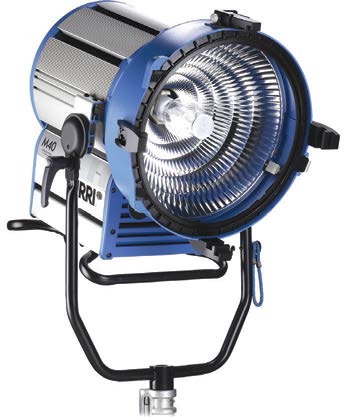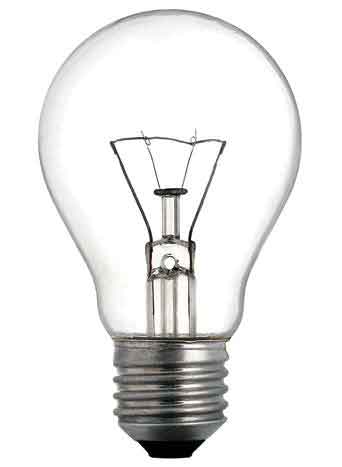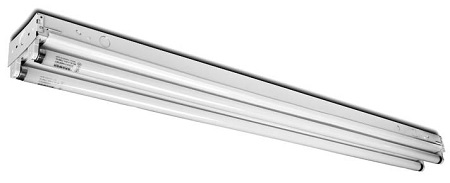The All-Important Players in Lighting
We cannot deny how quickly lighting technology is advancing, nor how certain technologies are taking over and replacing those of the past. However, units such as HMIs, tungsten and fluorescent fixtures continue to be major players on set, consistently proving effective for lighting specific scenes.
No matter what situation I am in, I make sure to have a variety of units to choose from for a scene, while still maintaining a level of specificity. Naturally, when on location, we run into an array of available units—incandescent bulbs, fluorescent overhead lighting, large windows. Every light we use to match available light or to supplement a source is going to have its own unique characteristics.
LED LIGHTS

LED lighting LED units are rapidly showing up more predominately on set, both in the studio and on location. The great thing is that LEDs are becoming more accurate in terms of color and undeniably efficient with power. They can be turned on and off easily, without having to warm up like an HMI would. So for lighting gigs that need a quick save or strike, these are great.
It used to be that LEDS would not be sufficient in supplying the powerful outputs that I often need. For example, shooting against windows usually makes for a beautiful shot. To expose for what is outside the window and still expose the subject in the room, a very large, soft source is needed on the inside. HMIs like the ARRI M8 or the K5600 Jokers are great for this. To make the light look as natural as possible when trying to expose for the window, it must be softened a whole lot, so the bigger the unit the better in terms of wattage.
Placing an HMI outside the window to give the daylight some direction is also always a home run. Though I still defer to HMIs for these situations, and believe the color is a much better, seamless match, there are a large variety of strong LEDs that provide incredibly strong outputs and daylight color for the job.
TUNGSTEN LIGHTING

Tungsten lighting Tungsten incandescent units have the perfect 100 CRI, and are beautiful when it comes to lowlight interiors. I have always been a big fan of tungsten. It is great on skin, and having very focused beams allows for strategic placement of the light. A very directional, focused light can be placed across a room and shoot into a bounce board, for example, on the other side.
Tungsten can be an excellent choice in many circumstances. When shooting something set in a world of incandescent practicals, there is no question. The shooting situation, even the time period the project is set in, and knowledge of our countless lighting options will indicate what is best to use, but tungsten lighting is still a powerful tool.
There are LED varieties that provide tungsten color temperature, and can be focused, which have easily replaced the older, very large tungsten systems, but I have yet to discover an LED that gives me the same quality and color match of a tungsten incandescent. Yes, LEDs are replacing old streetlights and showing up inside new homes, but that incandescent quality is still a look that is often called upon, and with new ways to possibly make incandescent higher in efficiency, it may make an even bigger comeback.
FLOURESCENT LIGHTING

Flourescent lighting Fluorescent lighting is unfortunately still difficult to ignore on location, where the bulbs present a green tint or other spike in color that can be difficult to correct. They do not heat up like other units, but are harder to shape and focus.
Even though our technology is advancing and we may not use as many fluorescent fixtures in our lighting packages, these are important to understand and work with. A common mistake is to run into fighting green and magenta, not knowing when to stop trying to color correct. If there is a spectrometer around, it may save a lot of work later trying to fix color. In a controlled studio environment, fluorescent fixtures can still be found, and be quite efficient, with reasonable power requirements and onboard dimmers.
On location, it is sometimes best, if possible, to replace what bulbs are present with more efficient, higher-end brands.
Our industry has not completely abandoned older lighting technologies for newer ones, and there are so many uses for every unit. The colors and qualities of older lighting technologies are still very much everywhere in our world. It is very useful to have access to a variety of tools, and even keep items such as tungsten bulbs and tiny LEDs in any personal kit.
Every shoot is unique, along with its budget and locations, so a lot should go into selecting a package. It is never about any one type of light, and it really opens up many creative solutions and strategies when a vast knowledge of lighting technologies is present.
Julia Swain is a cinematographer based in California, whose narrative films include “Killing Animals,” “Jilted” and “Cassidy Red.” Her latest feature film, “Women of Light” will premiere in late 2016. She continues to shoot on a variety of formats, seeking to create compelling visuals for every story and brand. She can be reached atjuliaswaindp@gmail.com.
Get the TV Tech Newsletter
The professional video industry's #1 source for news, trends and product and tech information. Sign up below.
